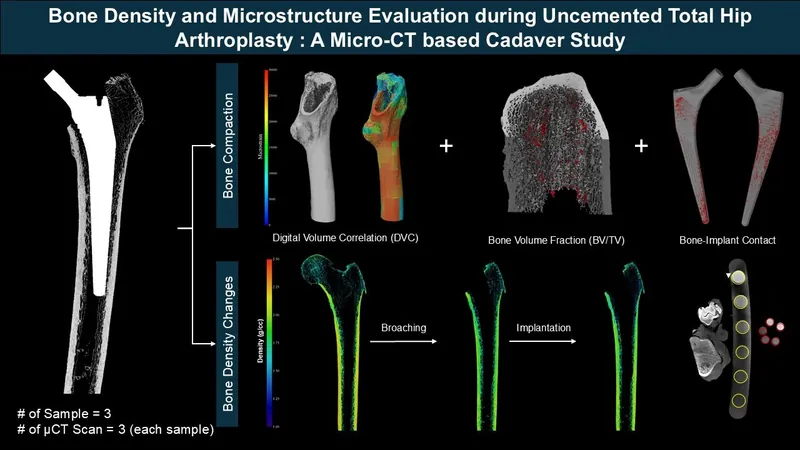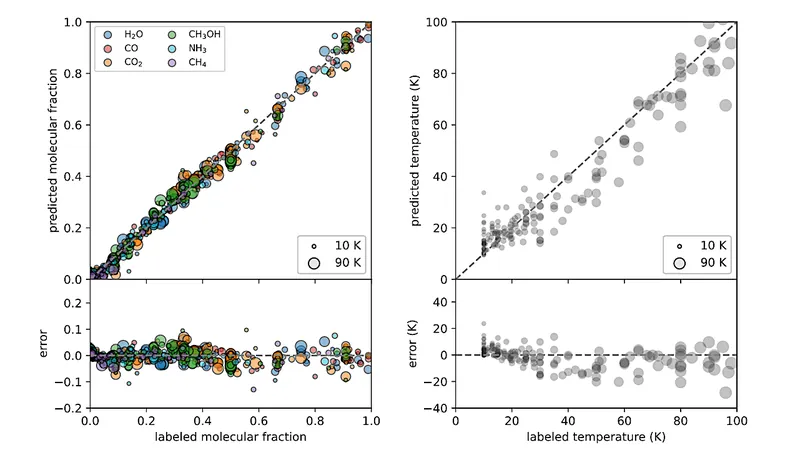
Revolutionary Imaging Techniques Unveil Secrets of Bone Dynamics During Hip Replacement Surgery
2025-09-04
Author: Wei Ling
Unlocking the Future of Hip Replacements
Imagine a world where hip replacement surgeries are not only more successful but also tailor-made for each patient. Thanks to groundbreaking research from the University of Warwick, this vision is inching closer to reality. With uncemented hip replacements expected to skyrocket among younger patients in the coming years, understanding how these surgeries affect bone structure is vital.
The Boon of Uncemented Implants
Unlike traditional cemented implants that may degrade over time, uncemented hip replacements encourage the body’s bone to grow and bond directly to the implant—creating a natural, robust stability. This innovative approach could transform countless lives, particularly as demand is projected to increase fivefold by 2030.
Deep Dive into Bone Behavior
Researchers, led by Ph.D. researcher Vineet Seemala, employed advanced imaging techniques using cadaver samples to dissect the surgical practices surrounding uncemented total hip arthroplasty (THA). Their findings offer unprecedented insights into the bone’s microstructural changes during surgery.
The Importance of Broaching
A key element of the procedure is 'broaching,' where surgeons meticulously prepare the femur for the implant. This study found that this technique not only increases bone density around the implant by 21% but also enhances the fit, ensuring a snug lodging within the bone architecture. Such precision is vital, as merely maximizing surface contact isn't enough for successful integration.
Transforming Surgical Outcomes
While traditional scans have struggled to capture these intricate changes, the research reveals that direct bone-to-implant contact might seem low at first glance, but the implant's positioning is remarkably effective. Rather than focusing solely on bulk contact, preserving the compacted bone debris can be crucial for stability.
Towards Personalized Hip Replacements
The implications of these findings could reshape surgical practices. With enhanced understanding of bone behavior, future surgeries may become increasingly personalized, optimizing both techniques and implant choices. This future-forward approach aims to reduce complications and accelerate recovery.
A Vision for Perfection
As Dr. Arnab Palit, the study's senior author explains, this research not only sheds light on interactions between bone and implant but also lays the groundwork for more accurate surgical planning tools. The goal? To minimize surgical complications and make implant failures a story of the past.
A Call for Further Research
While most hip replacement outcomes are positive, some patients still face issues, often related to implant positioning or long-term stability. Professor Richard King emphasizes the importance of understanding the femur-implant interaction to improve procedural precision.
With ongoing research, the dream of achieving flawless hip replacements that don’t loosen over time becomes ever more attainable. Stay tuned as science continues to innovate in the realm of orthopedic surgery!





 Brasil (PT)
Brasil (PT)
 Canada (EN)
Canada (EN)
 Chile (ES)
Chile (ES)
 Česko (CS)
Česko (CS)
 대한민국 (KO)
대한민국 (KO)
 España (ES)
España (ES)
 France (FR)
France (FR)
 Hong Kong (EN)
Hong Kong (EN)
 Italia (IT)
Italia (IT)
 日本 (JA)
日本 (JA)
 Magyarország (HU)
Magyarország (HU)
 Norge (NO)
Norge (NO)
 Polska (PL)
Polska (PL)
 Schweiz (DE)
Schweiz (DE)
 Singapore (EN)
Singapore (EN)
 Sverige (SV)
Sverige (SV)
 Suomi (FI)
Suomi (FI)
 Türkiye (TR)
Türkiye (TR)
 الإمارات العربية المتحدة (AR)
الإمارات العربية المتحدة (AR)